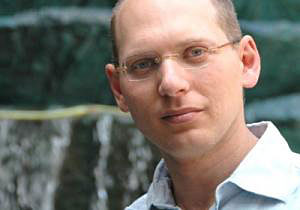In 1994’s Uruguay Round Agreements Act (URAA), Congress restored the copyrights of potentially millions of non-U.S. works that had fallen into the public domain. Some of these works are by well-known artists, authors, and composers, including Picasso, Virginia Woolf, and Shostakovich. The majority, however, are by obscure and even amateur creators. Last year, the Supreme Court agreed to consider a challenge to the URAA. The conductor of a small orchestra joined with film distributors and booksellers to argue that the URAA had taken away their livelihoods, making it impossible for them to use the works on which they had built their businesses.
Over the summer, I filed an amicus brief with the Supreme Court, supporting the position of the petitioners. The brief showed that the law was not only detrimental to the small organizations involved in the case. Major cultural industries like Hollywood had also been built on the use of a stable public domain. I distilled these arguments into an op-ed that appeared in the New York Times on October 5th, 2011.
The same day that the op-ed appeared, I traveled to Washington, D.C. to hear the Supreme Court arguments in the case. Judging from the questions asked by the Justices, the Court shared my concerns about Congress’s power to expand the scope of copyright law, and they tested the URAA against many of the constitutional limits placed on copyright.
“If the law is upheld, however, the vast majority of the works at issue in this case will languish as orphans, without discernable copyright holders. No one will be able to use these works, because we won’t know who to ask for permission.”
– Peter Decherney
Copyrights, for example, must be granted for a limited time. Justice Ginsburg pointed out that many of the works at issue in the case had never been given the chance to be protected; their copyright term was zero. The Constitution also says that copyright must “promote the progress” of knowledge. This dictum is often interpreted to mean that copyright law must encourage the creation of new works. Since the URAA offered only retroactive protection, Justice Breyer noted, it did not fulfill that purpose. “[I]n this case,” he said, “by definition, there’s no benefit to anything at all that is not already created.”
In another line of questioning, Chief Justice Roberts expressed concern about whether Congress had stretched copyright to a point that overstepped First Amendment limits. He posed the question to new Solicitor General Donald Verrilli: “One day I can perform Shostakovich; Congress does something, the next day I can't. Doesn't that present a serious First Amendment problem?” The Chief Justice then expanded on that question with a colorful example, asking if Congress could extend copyright protection to the national anthem, and if it did, what would that do to Jimi Hendrix’s distinctive rendition of the piece? After some detours, Verrilli hit on a possible answer: Jimi Hendrix might be protected by fair use, one of copyright’s safety valves. Copyright law, he was implying, already has sufficient protections for safeguarding free speech.
Copyright law does contain protections for the circulation of knowledge. In addition to fair use, copyright’s scope is limited to the specific visual form or combination of works used to express an idea—not the ideas themselves. From a practical perspective, however, I see all too often the restraints that copyright places on speech. Fans are regularly prevented from criticizing the work of media conglomerates, because of copyright. Collage artists’ works are pulled from museum walls after the complaint of a copyright holder. And scholarly books lack sufficient evidence, because their authors are unable to clear the rights to key pieces of data. In practice, copyright often takes over where censorship leaves off.
The famous works affected by the URAA will be claimed by artists’ estates or corporate copyright holders. If the law is upheld, however, the vast majority of the works at issue in this case will languish as orphans, without discernable copyright holders. No one will be able to use these works, because we won’t know who to ask for permission.
Of course, reading the Justices’ minds is a dangerous game. Their questions are only oblique glimpses into their thinking about the issue, and we will have to wait for a decision to read their final pronouncement. In this case, there is also a possibility that we will never have a final statement from the Court. Justice Kagan recused herself because she worked on the case as Solicitor General, and a split decision is a likely outcome. If that happens, the Tenth Circuit decision will stand, the URAA will remain in force, and we will hear fewer performances of Shostakovich. The Jimi Hendrix estate might want to start worrying as well.



